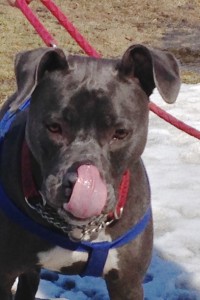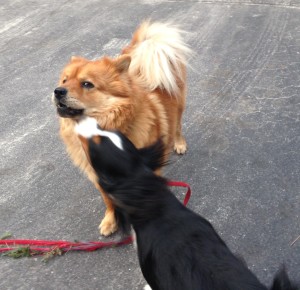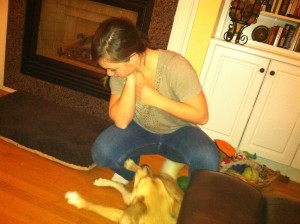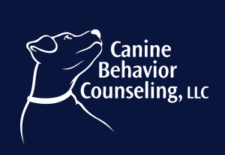Clients often say their dog bit without warning, however if you understood dogs body language, you would have seen signs that your dog was worried prior to the bite.
Signs of Stress:
- Head lowered

This large tounge flick is an obvious stress signal in a dog. - Tail tucked
- Lip licking
- Panting and Pacing
- barking
- Excessive salivation
- Ears pulled to the side or way back
- Hiding behind the owners or under the furniture, it is not cute, it is a sign of distress. Recognizing when a dog is needing space would be beneficial in preventing a dog bite.
Level One Distance Cue (asking for distance):

- Overt eyes away
- Turning head away
- Turning head and neck
- Getting up and moving away
- offering only his back to be petted These are Level One Behaviors that a dog is not interested in being pressured by the stimuli present, we refer to these as Distance Cues or request for space.
If these behaviors do not work, then Level Two Distance Cues may be used to obtain distance:
- Growl
- stiffening of the body
- Brief direct eye contact
- Hard eyed stare with closed mouth
- Closing of the mouth
- Lip Curl or show of teeth
- Air Snap
When these Level 2 warnings are corrected, punished or avoided, the dog will not use them but when pressured to the point of fight or flight, the dog may use a Level 3 Distance cue:
- Nip
- Bite and release
- Bite and hold
- Bite multiple times

This spits mix gives the young girl a hard eyed stare just after petting. To avoid conflict the girl looks away and draws her hands away to relieve stress.
When a dog bites, they most often run and hide knowing they will be reprimanded. So, why do they bite? I do not believe dogs enjoy punishment. Then how can we explain a dog that bites? Is it rewarding? Is it necessary to feel safe? There are always warning signs
For Guarding Behavior Modification I suggest you read Mine! A Practical Guide to Resource Guarding in Dogs by Jean Donaldson. If your dog is shy, skittish, insecure, barks or growls at most strangers, then understand canine body language would be a must for you. You will enjoy reading: Canine Body Language a Photographic Guide by Brenda Aloff.

